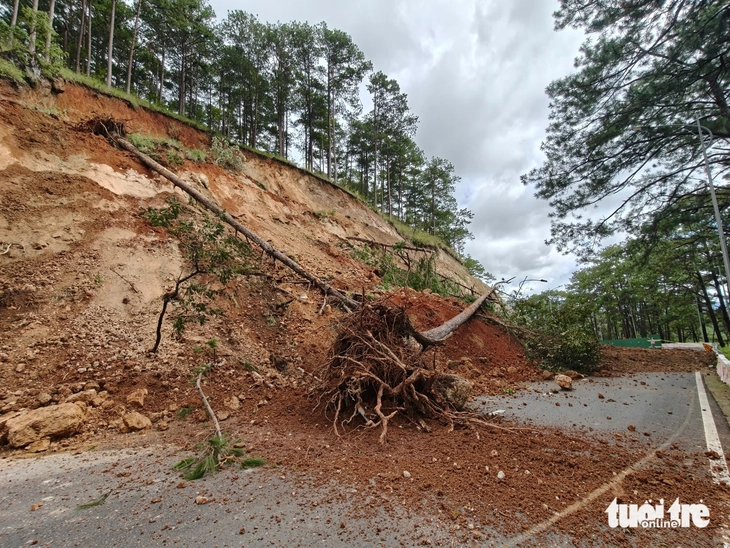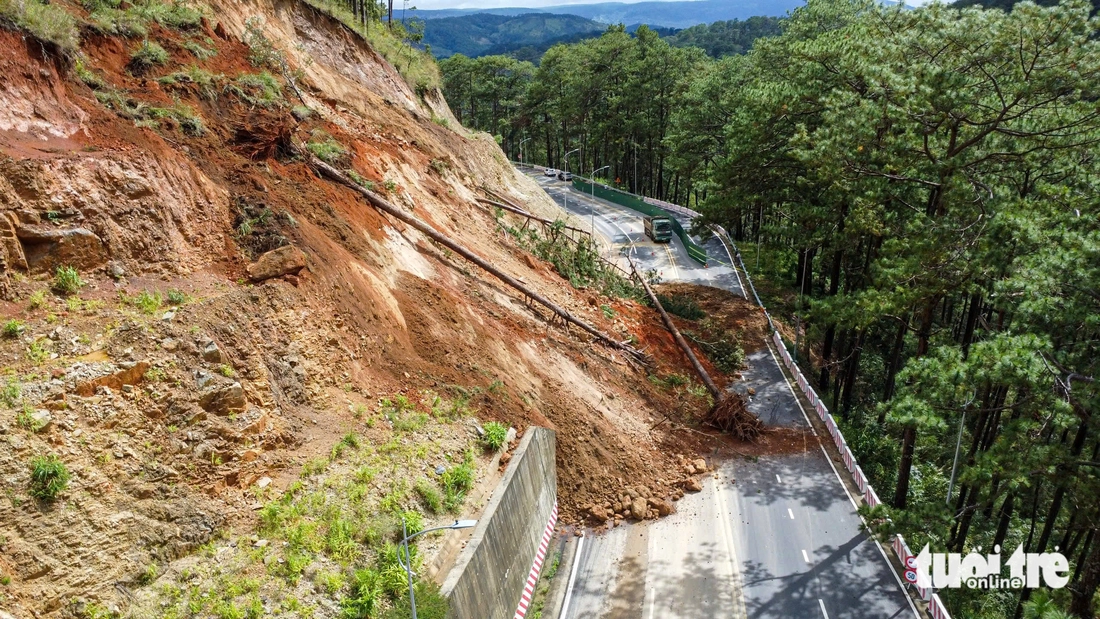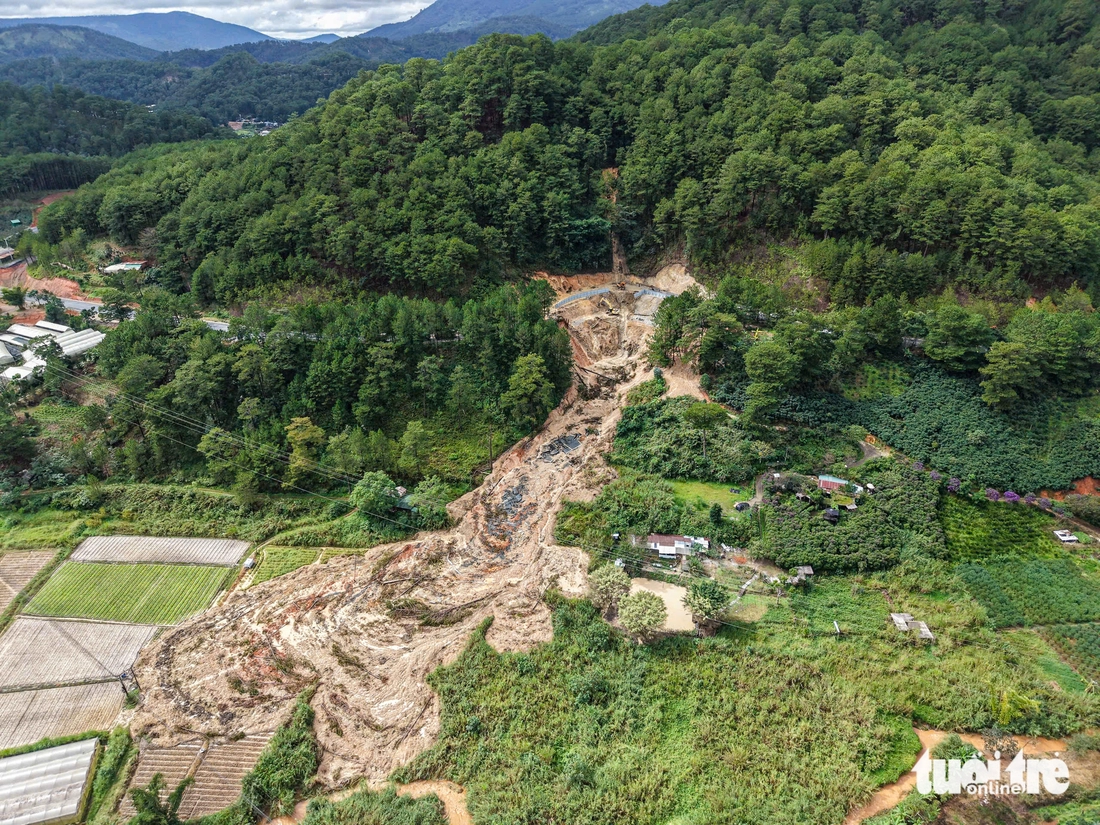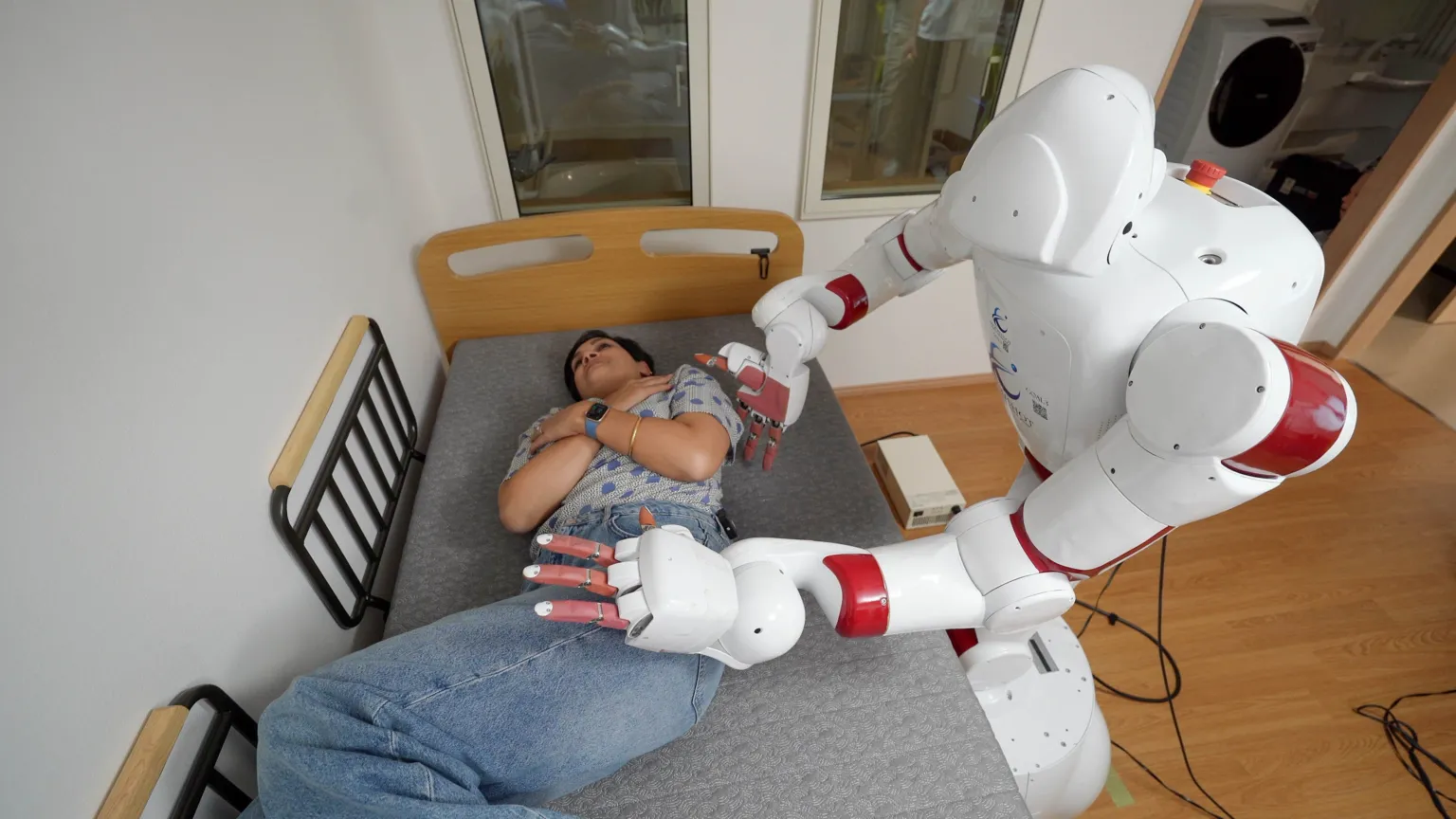NTTVblog
Your vision will become clear only when you look into your heart.... Who looks outside, dreams. Who looks inside, awakens. Carl Jung
Saturday, December 13, 2025
AI is making job hunting harder. Here’s how to navigate it
AI is making job hunting harder,some experts say. Here’s how to navigate it.
By Claire Thornton Globe Staff, Updated December 6, 2025
It’s the question every job hunter seems to be wrestling with: How do you get
your resume past the AI bots and in front of a human decision-maker?
Turns out, Generative AI is creating challenges for many job seekers and
employers, many of whom are having a harder time connecting the right
candidates to roles, according to some experts.
When everyone can use ChatGPT to churn a personalized cover letter, job
seekers end up competing against more applicants. And for hiring managers,
application materials made using the technology start to look all too similar,said Ethan Mollick, a business professor at the Wharton School at the University of Pennsylvania. “Cover letters used to be an indicator of something, now they’re not,” said Mollick, who co-directs Wharton’s Generative AI Lab. “It’s an example of broader chaos.”
Also worrisome: Experts on race discrimination and other biases in technology are raising the alarm that AI could be more likely to reject applicants who have a disability, an accent, or marginalized identity. As the average length of the job-hunting period ticks upward,applicants must focus on building human connections at would-be employers and use AI to their advantage earlier in the job search process, said
Lynn Wu, another Wharton professor who studies AI. “The best thing to actually stand out in AI world is to have human connections,” Wu said.
Here are five things to know about AI screening in hiring:
How do AI screeners work? There are two main types.
Older versions of AI have been used for nearly a decade to screen for “key
words” in resumes that match words in the online job description, Wu said.
More recently, a smarter version of AI referred to as machine learning is used
to read cover letters and get a broader sense of whether an applicant is a
match, Wu said.
After an application makes it past the first, older AI screen, the so-called ML
screen will score the applicant, Wu said.
“Like, out of 0 to 100, how does this cover letter fit to the job,” said Wu,
adding that anyone above a cut-off score will get a first-round interview.
Many employers use both AI screens for a two-pronged approach, Wu said.
However, AI is changing so rapidly that many experts are still catching up to
what technology companies may be using to screen applications, she said.
Don’t forget key words in resume, but don’t overdo it
To get past the first AI screen, Wu said, make sure that lots of key words and required skills from the job description are in your resume.
However, don’t overdo it, says Hilke Schellmann, an AI researcher at New York University who wrote the book “The Algorithm: How AI Decides Who Gets Hired, Monitored, Promoted, and Fired, And Why We Need To Fight
Back.”
“Beware of looking too good on paper,” Schellmann told NYU News last
year. “Aim for a 60–85 percent match because AI might filter out resumes
that match the job description 100 percent, inferring they are a copy of the
job description."
Don’t use symbols or images that may trip up a biased AI screener
Schellmann said her research found AI screens are biased against symbols that vary from the 26-letter alphabet and standard punctuation, like ampersands (&) or tildes (~).
She told NYU News that applicants should use a simple template without images, columns, or special characters.
Highlight human connections in your cover letter (but also: get out and meet people you can reach out to for jobs)
Wu, who has taught at Wharton since 2012, said nearly half of all jobs in the
US still come from personal referrals.
In the age of AI, any human connection such as a coffee chat or college
alumni group will help a candidate stand out, she said.
A coffee chat can even be done remotely over Zoom, she said, and then an
applicant can write about that personal conversation in a cover letter.
From there, the smarter machine learning AI might recognize that the
candidate is a strong fit for the company, she said.
“Write that you had a coffee chat — or even just met someone — and mention
it high up in the cover letter," she said. “Any kind of personal touch — not AI
touch, surprisingly — helps you get past AI."
Do use AI to find roles you’re a good match for
Using AI earlier in the job hunt can help you more efficiently find roles that
are good for you, Mollick said.
Job seekers, especially young people new to work, can ask ChatGPT to find
specific job listings that correlate with their skills, background and other
parameters, he said. You can even feed ChatGPT your resume and ask it how
to best position yourself for job applications, Mollick said.
“AI is usually pretty good at giving advice,” he said. “You can use it as a job
counselor, adviser or helper to put your best foot forward.”
Claire Thornton can be reached at claire.thornton@globe.com. Follow Claire on X
@claire_thornto.
Friday, December 12, 2025
Bộ sưu tập các tác phẩm Hán văn của tủ sách Hoàng Xuân Hãn được đưa vào thư viện của Viện Đông Á (IAO, Lyon)
Bộ sưu tập các tác phẩm Hán văn của tủ sách Hoàng Xuân Hãn
được đưa vào thư viện của Viện Đông Á (IAO, Lyon)
François Guillemot - Nghiêm Thanh Hương
Đã từ nhiều năm, thậm chí trong nhiều thập niên, các nhà nghiên cứu Việt Nam học tự hỏi tủ sách nghiên cứu của học giả Hoàng Xuân Hãn (1908-1996) bây giờ ra sao. Năm 2025, thông qua cháu ngoại của ông, toàn bộ tủ sách của ông đã ra khỏi bóng tối để đạt một tầm vóc mới.
Quá trình tiểu sử của nhà học giả lỗi lạc này, được ghi lại khi ông qua đời ngày 10 tháng 3.1996 ở tuổi 88, thể hiện một mối quan tâm kiên định, tìm hiểu về thế giới chung quanh, gia phả dòng họ, và những dòng dõi của lịch sử đất nước. Như Nghiêm Phong Tuấn nêu lên trong một bài báo mạng vinh danh sự uyên bác của ông Hãn, “có khi ông phát hiện tài liệu lịch sử như trong một kịch bản trinh thám”.1 Từ một tấm bia xẻ làm hai, vùi trong đất, ông có thể mô tả cụ thể sự bạo tàn của cuộc xâm lăng nhà Minh trong thế kỷ XV.
Sinh viên Trường Bách Khoa năm 1930, kỹ sư cầu đường năm 1934, thạc sĩ toán năm 1936, giáo sư, học giả Việt Nam của thế kỷ XX, ngoài tầm cỡ đặc biệt của ông, Hoàng Xuân Hãn còn là cầu nối giữa Pháp và Việt Nam2. Mối liên hệ này xuyên qua ba mảng đề tài:
Vấn đề Cổ/Kim: chuyển đổi từ thời kỳ cổ xưa sang hiện đại, như với quyển Danh từ khoa học, xuất bản năm 1942, và các nghiên cứu uyên thâm của ông về hai tác phẩm kinh điển Kim Vân Kiều (Truyện Kiều) và Chinh phụ ngâm, hay nghiên cứu lịch sử về danh tướng Lý Thường Kiệt (1019-1105). Hoàng Xuân Hãn, cũng như Nguyễn Văn Tố (1889-1947) và vài học giả khác, là người truyền đạt lịch sử và văn hoá.3
Vấn đề văn hoá Tây phương/Đông phương: văn hoá Việt được thêm phong phú khi ông kết hợp lý tính Tây phương trong các lĩnh vực khoa học (lịch sử, địa lý, triết học, toán, y học) với những giá trị truyền thống của nền văn hoá Việt (đặc biệt qua những dẫn chứng về Phật giáo, vũ trụ luận hay văn hoá chịu ảnh hưởng Trung Hoa) 4
Vấn đề đối thoại chính trị: Hoàng Xuân Hãn là Bộ trưởng Giáo dục – Mỹ thuật trong chính quyền ngắn ngủi đầu tiên của Việt Nam độc lập khỏi Pháp nhưng vẫn còn chịu uy quyền của Nhật. Với tư cách ấy, ông đã “Việt Nam hoá” toàn bộ chương trình giảng dạy. Năm 1971, ông cũng đưa ra trong “Một vài kỹ vãng về Hội nghị Đà Lạt” một biên bản chi tiết về Hội nghị Đà Lạt năm 1946, để phân tích rõ hơn sự thất bại của cuộc đối thoại Pháp-Việt, ủng hộ quan điểm của Việt Nam vượt qua những căng thẳng nội bộ phía Việt Nam. 5
https://www.diendan.org/bo-suu-tap-cac-tac-pham-han-van-cua-tu-sach-hoang-xuan-han-duoc-dua-vao-thu-vien-cua-vien-dong-a/BibHXH_2.JPG
Nhìn chung bộ sưu tập các tác phẩm Hán văn của Hoàng Xuân Hãn tại Viện IAO. Hình FG
Trong bối cảnh ấy, nhìn xa trông rộng, Hoàng Xuân Hãn đã kiên trì giúp Việt Nam bước vào thời kỳ hiện đại, như Nguyễn Minh Vũ trong một bài đăng trên mạng, nhắc lại nội dung bức thư của ông gửi Phạm Văn Đồng và đại tướng Võ Nguyên Giáp năm 1996, nhân dịp Tết Bính Tý:
“đức tính người lãnh dạo, những vấn đề của các dân tộc thiểu số, cuộc tranh chấp hải phận, vấn đề Cambodge, những vấn đề nợ quốc tế, vấn đề bom hạt nhân của Trung Quốc, sự cần thiết thành lập quan hệ với Hoa Kỳ; nhiều vấn đề nêu lên trong bức thư vẫn còn là thời sự nóng bỏng ngày nay”.6
Sự “pha trộn” giữa dấn thân với cao vọng chính trị, chuyển đổi sang chữ quốc ngữ7, nghiên cứu cơ bản về văn hoá, từ vựng khoa học, văn chương Nôm và lịch sử cổ đại, vai trò nổi bật của một trí thức sống xa đất nước, lòng yêu nước sâu nặng ... Hoàng Xuân Hãn đã là nguồn cảm hứng cho nhiều người và ngay từ năm 1945 đã phác hoạ một hướng đi mẫu mực cho một nước Việt Nam hoà giải trong tương lai.
Tủ sách Hoàng Xuân Hãn được bảo trì trong một ngôi nhà ở Orsay, hầu như không ai được vào tham khảo cho đến khi con rể ông Hãn, Nghiêm Xuân Hải, qua đời năm 2023. Tủ sách nổi tiếng là có nhiều bảo vật về hai nền văn hoá Việt và Trung Hoa, như những bản khắc gỗ chữ Nôm và các sổ tay nghiên cứu của ông, đặc biệt là công trình nghiên cứu trong hơn 50 năm về Kim Vân Kiều8. Qua hợp tác ba bên, tủ sách của học giả lỗi lạc này đã đến với ba cơ quan ở Pháp: các tài liệu chữ quốc ngữ và Nôm được đưa vào Thư viện đại học các ngôn ngữ và nền văn minh (Bibliothèque universitaire des langues et civilisations – BULAC) ở Paris, các tác phẩm Hán văn về Thư viện của Viện Đông Á (Institut d’Asie Orientale - IAO) ở Lyon, thư từ và các bản chép tay về Thư viện Quốc gia Pháp. Đặc biệt, BULAC đã đề nghị một giải pháp để nhanh chóng đưa vào sử dụng (lưu trữ, kiểm kê, số hoá). Những tài liệu Nôm quí giá đã được đưa ngay vào một chương trình số hoá của BULAC để các nhà nghiên cứu quốc tế có thể truy cập trên mạng.
Kho sách đến IAO ngày 25.6.2025
Qua trung gian bà Nghiêm Thanh Hương, cháu ngoại ông Hãn, được các anh chị em tiếp tay, thư viện của IAO đã đón nhận 25 thùng ấn phẩm Hán tự vào ngày thứ tư 25.6.2025. Kho sách đã được phân loại sơ khởi để xác định số lượng và nội dung, và hiện để tạm trong một văn phòng của IAO trên gần 30 thước kệ sách (khoảng 2 000 quyển). Kho sách gồm một vài bộ sưu tập lớn sách văn học cổ điển và lịch sử, và một số tác phẩm đủ loại về khoa học và kỹ thuật, ngôn ngữ học và triết học Trung Hoa. Chương trình xử lý các bộ sách này dự trù bắt đầu tháng 10.2025. Mỗi ấn phẩm đưa vào danh mục sẽ được xác định qua một con dấu riêng và phần ghi chú trong hệ thống thống nhất quản lý thư viện SIGB. Viện IAO sẽ thông báo khi nào kho sách có thể được tham khảo.
Như thế, thông qua ba cơ quan này ở Paris và Lyon, công trình quan trọng của « nhà ái quốc không đảng phái »9 này, thường được các nhà nghiên cứu ngày nay viện dẫn, dựa vào những bài viết, ý tưởng và thơ văn của ông, sẽ được đưa ra cho toàn thể cộng đồng quốc tế tra cứu. Phần nào đó, qua tất cả những khía cạnh văn hoá, khoa học và chính trị nêu trên, toàn bộ kho sách này có tầm vóc một di sản. Cũng vì thế, năm 2000, bốn năm sau ngày tạ thế, Hoàng Xuân Hãn đã được truy tặng giải thưởng Hồ Chí Minh cho ba tác phẩm lịch sử quan trọng nhất của ông: Lý Thường Kiệt, La Sơn Phu tử và Lịch và Lịch Việt Nam ( NXB Khoa học xã hội, 2003). Trước đó, toàn bộ những tác phẩm của ông đã được NXB Giáo dục ấn hành năm 1998, gồm ba tập : 1. Nhân chứng, 2. Con đường và cảm nghĩ, 3. Trước tác (Văn học).10
Như nhà văn Hữu Ngọc viết năm 2014 trong một bài tưởng niệm Hoàng Xuân Hãn: “Trong bốn thập niên cuối đời ở Pháp [từ năm 1951], ông đã có những cống hiến vô cùng to lớn cho đất nước qua các công trình nghiên cứu và tác phẩm uyên bác” 11. Về cuộc đời của mình, Hoàng Xuân Hãn đã thổ lộ những lời xúc động này với nhà văn Nguyễn Đức Hiền năm 1994: “Hoàn cảnh đã không cho phép tôi tham gia công cuộc giải phóng đất nước, từ đó tôi đã hết sức cố gắng góp phần giải phóng đồng bào ta về mặt tri thức và văn hoá, đưa họ ra khỏi cái lồng chật chội và trống rỗng của người nô lệ”. 12 Một công việc dài hơi vẫn được những học giả ngày nay kiên trì đeo đuổi.
François Guillemot và Nghiêm Thanh Hương
9.7 2025
(Bản dịch : Đỗ Tuyết Khanh)
Nguồn bản gốc : Indomemoires 9.7.2025
Chú thích :
1. Báo mạng của Trường Bách Khoa: Nghiêm Phong Tuấn, “Un polytechnicien au cœur de la tourmente vietnamienne : Hoàng Xuân Hãn (30), 1909–1996”, La Jaune & La Rouge, Magazine n° 521, janvier 1997. URL : https://www.lajauneetlarouge.com/un-polytechnicien-au-coeur-de-la-tourmente-vietnamienne-hoang-xuan-han-30-1909-1996/ (dành cho người mua dài hạn)
2. Những bài viết tưởng niệm trên mạng:
Nghiêm Phong Tuấn, 1997, bài đã dẫn, ; Nguyễn Minh Vũ, “Hoàng Xuân Hãn (1908-1996)”. Nguyên tác tiếng Việt, bản dịch và chú thích của Vũ Ngọc Quỳnh. [2012?] ; Hữu Ngọc, “Les tourments d’un éminent lettré”, Le Courrier du Vietnam, 02/11/2014. URL : https://lecourrier.vn/les-tourments-dun-eminent-lettre-160/125362.html
3. Những bài viết chính của ông có thể truy cập trên Gallica
4. Đặc biệt, ông đã lập một lịch tương đương ngày tháng rất hữu ích cho nghiên cứu lịch sử cổ đại.
5. Một vài kí vãng về hội nghị Đà Lạt, Sài Gòn 1971, in lại ở Paris, AVAC, 1987
6. Nguyên Minh Vũ, bài đã dẫn.
7. Chữ quốc ngữ : ngay năm 1938, ông đã đồng sáng lập Hội Truyền bá Quốc Ngữ, do Nguyễn Văn Tố làm Hội trưởng. Ban Trị sự lâm thời của hội gồm nhiều nhân vật nổi bật. Ngoài Nguyễn Văn Tố còn có Bùi Kỷ, Tôn Thất Bình (Hội phó), Phan Thanh (thư ký), Phạm Hữu Chương và Quản Xuân Nam (phó thư ký), Đặng Thai Mai (thủ quỹ), Nguyễn Văn Lô và Võ Nguyên Giáp (phó thủ quỹ), Nguyễn Văn Huyên, Trần Trọng Kim, Hoàng Xuân Hãn và Lê Thước (cố vấn), Trần Văn Giáp và Lê Thăng (uỷ viên). Nguồn: Trung tâm lưu trữ quốc gia I
8. Tác phẩm sẽ do NXB Nhã Nam (Hà Nội) xuất bản cuối năm 2025.
9. Hữu Ngọc, 2014, bài đã dẫn
10. Các tác phẩm này có thể tham khảo trong các bộ sưu tập tiếng Việt của IAO
11. Hữu Ngọc, 2014, bài đã dẫn
12. Hữu Ngọc, 2014, bài đã dẫn
Các thao
Wednesday, December 10, 2025
Năm 2025 chỉ là dấu hiệu đầu tiên cho một chu kỳ lụt triền miên
https://www.facebook.com/groups/groupnguoivietcali/posts/25674829955456173/
... Năm 2025 chỉ là dấu hiệu đầu tiên cho một chu kỳ lụt triền miên nếu không có thay đổi.
Nguyên nhân đầu tiên cho thấy rừng đóng vai trò như lớp đệm điều tiết nước tự nhiên. Khi rừng còn, nước mưa thấm chậm, giảm nguy cơ lũ đột ngột và hạn chế sạt lở.
Thế nhưng trong nhiều năm, rừng tự nhiên đã bị triệt phá để nhường chỗ cho các dự án thủy điện nhỏ, khu du lịch, dự án bất động sản và khai thác gỗ trái phép. Nhiều hoạt động phá rừng diễn ra công khai, có tổ chức, thậm chí có sự bao che của cán bộ nhà nước.
Việt Nam cũng nhiều lần vận động trồng rừng nhưng rừng trồng thay thế không thể bù lại chức năng giữ nước và chống xói mòn của rừng nguyên sinh.
Khi rừng biến mất, nước mưa không còn gì giữ lại, đổ ập xuống các vùng thấp, biến những cơn mưa lớn thành lũ chỉ trong vài giờ. Đây là hậu quả của quản lý yếu kém, không phải lỗi của thiên nhiên.
Trong hai thập kỷ qua, hàng trăm thủy điện nhỏ được xây dựng với mật độ dày đặc. Chúng phá rừng để lấy đất cho hồ chứa, làm biến dạng dòng chảy tự nhiên của các con sông, khiến nước tích tụ bất thường. Khi mưa lớn, các hồ phải xả đập để bảo đảm an toàn công trình, tạo ra dòng nước khổng lồ dồn về hạ du, làm lũ nặng hơn và bất ngờ hơn.
Điều đáng nói là nhiều thủy điện nhỏ được phê duyệt không xuất phát từ nhu cầu năng lượng quốc gia mà từ lợi ích nhóm. Chúng đóng góp rất ít vào nguồn điện nhưng lại gây ra hậu quả môi trường cực kỳ lớn.
Nguyên nhân khác là đô thị hóa sai và bê tông hóa cực độ biến thành phố trở thành chảo nước
Hầu hết các đô thị lớn của Việt Nam đang trả giá cho việc phát triển quá nhanh và thiếu khoa học. Những sai lầm lặp lại ở nhiều nơi như lấp kênh rạch để xây dựng, san đồi làm dự án, phủ kín đất bằng bê tông và nhựa đường, xây cao ốc dày đặc mà không có hệ thống thoát nước tương xứng.
Đà Lạt vốn là thành phố trên cao với khả năng thoát nước tự nhiên rất tốt, nay bị bê tông hóa thành lòng chảo. Nha Trang mất rừng đầu nguồn khiến dòng nước đổ thẳng xuống thành phố mỗi khi mưa lớn. Huế ghi nhận mưa kỷ lục và thiệt hại nặng nề vì rừng xung quanh bị tàn phá và tốc độ phát triển đô thị quá nhanh. TP. Hồ Chí Minh mất hàng trăm con kênh rạch do lấp để xây dựng, khiến nước gần như không còn đường thoát.
Đây không phải lỗi của mưa. Đây là hậu quả của quy hoạch đô thị sai lầm kéo dài suốt nhiều năm.
Tham nhũng chính là nguyên nhân gốc khiến mọi giải pháp đều thất bại.
Không thể phân tích vấn đề lũ lụt mà bỏ qua yếu tố tham nhũng. Thực tế cho thấy nhiều vụ phá rừng quy mô lớn không thể diễn ra nếu không có sự bảo kê. Các dự án lấp suối, lấp hồ, chiếm hành lang thoát nước không thể được phê duyệt nếu không có những mối quan hệ lợi ích. Thủy điện nhỏ mọc lên hàng loạt không thể có nếu quy trình thẩm định minh bạch. Quy hoạch đô thị không thể bị bẻ cong nếu không có những sự thỏa hiệp nằm ngoài lợi ích của người dân.
Khi tham nhũng chi phối tài nguyên, đất đai, quy hoạch và xây dựng, mọi nỗ lực chống lụt đều trở nên vô nghĩa. Lũ lụt trở thành hậu quả tất yếu của một hệ thống vận hành sai.
Năm 2025 đánh dấu một bước ngoặt khi rừng đã mất đến ngưỡng không thể giữ nước; thủy điện nhỏ xuất hiện quá nhiều khiến dòng chảy bị biến dạng; đô thị đã bê tông hóa đến mức thiên nhiên không còn đường thấm; hệ thống thoát nước không theo kịp tốc độ phát triển; khí hậu cực đoan làm mưa tập trung với cường độ lớn.
Khi toàn bộ hệ thống tự nhiên và hạ tầng đô thị cùng lúc suy yếu, lũ lụt không còn là sự cố nhất thời mà trở thành hiện tượng lặp lại có tính hệ thống. Nếu không thay đổi, các năm sau chắc chắn sẽ nghiêm trọng hơn năm 2025.
Lụt năm 2025 không phải là rủi ro bất ngờ. Đây là kết quả của quá trình phá rừng, xây dựng thủy điện nhỏ thiếu kiểm soát, đô thị hóa sai quy hoạch và tham nhũng trong quản lý tài nguyên kéo dài nhiều thập kỷ.
Nếu Việt Nam không dám nhìn thẳng vào sự thật và không cải cách thật sự từ gốc, thì lụt lụt triền miên sẽ trở thành một phần bình thường của tương lai.
Lũ lụt năm nay chỉ là khởi đầu. Lũ những năm tới có thể trở thành định mệnh của đất nước nếu không có bước chuyển mình kịp thời và quyết liệt.
Tuesday, December 9, 2025
Taiwan seeks Japan talent to solve chip worker shortage
https://www3.nhk.or.jp/nhkworld/en/news/backstories/4448/
Taiwan seeks Japan talent to solve chip worker shortage
Taiwan leads the world in cutting-edge semiconductor production, but the industry is struggling with a human resources shortage. To remedy this, it has launched a program to attract Japanese students to foster future talent.
Program boasts attractive perks
A program in Taiwan for Japanese students began full-fledged operations at National Yunlin University of Science and Technology in September.
https://www3.nhk.or.jp/nhkworld/en/news/backstories/4448/images/OerxheYrKbwvb34XpmiYNi87o2N4Zgr4A37zFTzt.jpg
Students study semiconductors at National Yunlin University of Science and Technology in Taiwan
The program provides exceptional financial assistance. Thanks to corporate donations, the students are fully exempt from the tuition of about 15,000 dollars for four years. They can even receive living expenses of 320 dollars every month.
Its 17 participants learn specialized skills needed to make semiconductors such as mechanical engineering and production management. Classes are in Chinese and English.
Ogawa Kodai graduated from the economics department at a university in Japan. He joined the program to acquire practical knowledge he could apply in the industry.
He says he's learning things he never would have in Japan, and that the program lets him do things on his own.
Universities alone can't solve problem
Taiwan's eagerness to attract Japanese students comes as Taiwanese company TSMC, the world's largest chipmaker, aims to open its second factory in Kumamoto Prefecture in southwestern Japan.
The head of the university, Chang Chuan-yu, stresses the need for more efforts to cultivate talent.
https://www3.nhk.or.jp/nhkworld/en/news/backstories/4448/images/8C0VkzZInbHk3m4mKfJ41fuEpnc781jTz2Dv2I7p.jpg
National Yunlin University of Science and Technology President Chang Chuan-yu
Chang says, "Semiconductor makers need a lot of workers, but conventional universities can't keep up in developing human resources."
Japan, Taiwan universities team up on training
Universities in Japan and Taiwan are also working together. National Yang Ming Chiao Tung University, or NYCU, signed an agreement with four Japanese universities to grow talent for leading high-level research and development.
The universities have jointly set up a research institute, where a cleanroom, essential for making semiconductors, is available around the clock.
Ono Shinjiro, a graduate student in Japan, does research there to create next-generation semiconductors.
https://www3.nhk.or.jp/nhkworld/en/news/backstories/4448/images/DlKAzwVxCqw5tJq3aywOUjY8A1eYXMGZXvjrJYEg.jpg
Ono Shinjiro conducts research at the institute.
He says the cleanroom is ideal for working on experiments whenever he wants.
During class, students sometimes have discussions with Taiwanese company officials to learn how to connect new technologies to businesses.
Taiwan's semiconductor industry's strong point is its human resources system that swiftly trains new workers. While they are in university, it provides them with high-level skills, and brings them into production sites as new staff who can be of assistance.
Ono says being in an environment close to companies and industries got him thinking about things from all angles, and really changed his mindset.
Taiwan companies have high hopes for program
Johnson Lee, the vice president of a Taiwan company, has high hopes for outcomes of the program.
https://www3.nhk.or.jp/nhkworld/en/news/backstories/4448/images/2V7r2HqMPm5PsQfVWYByb4uPqUaTbRuKs2pBnovt.jpg
Johnson Lee, Vice President, Junsun Tech
Lee says participants can learn about the need to develop markets and competitive products.
The university plans to accept more Japanese students. A professor says Taiwan and Japan will work together to develop basic technology for next-generation semiconductors and create a win-win relationship.
Broad push aims to keep Taiwan on top
Academia, government, and companies in the industry are all working to ensure Taiwan stays the world's top semiconductor producer.
It's not just because chips are the backbone of Taiwan's economy. Amid growing military pressure from China, they are also seen as a tool to prevent conflict.
https://www3.nhk.or.jp/nhkworld/en/news/backstories/4448/images/OATTQVO3hWNakds3pOmWepBtkLNJG2GVOO2hyk5L.jpg
Students study at National Yunlin University of Science and Technology in Taiwan
The policies are supported by Taiwan's focus on cultivating fresh talent, something it sees as essential for creating new technologies.
Taiwanese companies and universities say they are taking a long-term perspective when it comes to sustaining human resources.
For its part, Japan's semiconductor industry is expected to see significant benefits from strengthening collaboration with Taiwan.
Sunday, December 7, 2025
Thiên tai và nhân tai tại Việt Nam tháng 9, 10, 11 và 12 năm 2025
https://cdn2.tuoitre.vn/thumb_w/730/471584752817336320/2025/12/6/base64-17650145259461037010546.jpeg
https://vi.wikipedia.org/wiki/L%C5%A9_l%E1%BB%A5t_Vi%E1%BB%87t_Nam_2025
https://cdn2.tuoitre.vn/thumb_w/1100/471584752817336320/2025/12/4/base64-17648431675772040833791.jpeg
Đất đá đổ xuống toàn bộ mặt đường đèo Prenn trong khoảng 50m đường - Ảnh: M.V.
https://cdn2.tuoitre.vn/thumb_w/1100/471584752817336320/2025/12/4/base64-17648431677171781386538.jpeg
Đất đá chảy xuống đường từ khu vực núi thuộc đèo Mimosa - Ảnh: M.V.
Saturday, December 6, 2025
Japan is facing a dementia crisis – can technology help?
https://www.bbc.com/news/articles/c4g9e34yzvgo
Japan is facing a dementia crisis – can technology help?
Dec 06, 2025
Suranjana Tewari Asia Business Correspondent, Tokyo
https://ichef.bbci.co.uk/news/1536/cpsprodpb/de17/live/7423b520-d188-11f0-8de5-0d4110f465fe.jpg.webp
Around seven million people suffer from dementia in Japan
Last year, more than 18,000 older people living with dementia left their homes and wandered off in Japan. Almost 500 were later found dead.
Police say such cases have doubled since 2012, underscoring a growing strain on the world's oldest society.
The crisis is further compounded by a shrinking workforce and tight limits on foreign workers coming in to provide care.
Japan's government has identified dementia as one of its most urgent policy challenges, with the Health Ministry estimating that dementia-related health and social care costs will reach 14 trillion yen ($90bn; £67bn) by 2030 - up from nine trillion yen in 2025.
In its most recent strategy, the government has signalled a stronger pivot toward technology to ease the pressure.
Across the country, people are adopting GPS-based systems to keep track of those who wander.
Some regions offer wearable GPS tags that can alert authorities the moment a person leaves a designated area.
In some towns, convenience-store workers receive real-time notifications – a kind of community safety net that can locate a missing person within hours.
Robot caregivers and AI
Other technologies aim to detect dementia earlier.
Fujitsu's aiGait uses AI to analyse posture and walking patterns, picking up early signs of dementia – shuffling while walking, slower turns or difficulty standing – generating skeletal outlines clinicians can review during routine check-ups.
"Early detection of age-related diseases is key," says Hidenori Fujiwara, a Fujitsu spokesperson. "If doctors can use motion-capture data, they can intervene earlier and help people remain active for longer."
Meanwhile, researchers at Waseda University are developing AIREC, a 150kg humanoid robot designed to be a "future" caregiver.
It can help a person put on socks, scramble eggs and fold laundry. The scientists at Waseda University hope that in the future, AIREC will be able to change diapers and prevent bedsores in patients.
https://ichef.bbci.co.uk/news/1536/cpsprodpb/dea2/live/c1577710-d0dd-11f0-9fb5-5f3a3703a365.jpg.webp
Scientists at Waseda University in Tokyo are developing caregiving robots
Similar robots are already being used in care homes to play music to residents or guide them in simple stretching exercises.
They are also monitoring patients at night - placed under mattresses to track sleep and conditions - and cutting back on the need for humans doing the rounds.
Although humanoid robots are being developed for the near future, Assistant Professor Tamon Miyake says the level of precision and intelligence required will take at last five years before they are safely able to interact with humans.
"It requires full-body sensing and adaptive understanding - how to adjust for each person and situation," he says.
Emotional support is also part of the innovation drive.
Poketomo, a 12cm tall robot, can be carried around in a bag or can fit into a pocket. It reminds users to take medication, tells you how to prepare in real time for the weather outside and offers conversation for those living alone, which its creators say helps to ease social isolation.
"We're focusing on social issues... and to use new technology to help solve those problems," Miho Kagei, development manager from Sharp told the BBC.
https://ichef.bbci.co.uk/news/1536/cpsprodpb/04e9/live/cc977c90-d189-11f0-abf3-97535f35adb4.jpg.webp
Toshio Morita (R) works at the Restaurant of Mistaken Orders
While devices and robots offer new ways to assist, though, human connection remains irreplaceable.
"Robots should supplement, not substitute, human caregivers," Mr Miyake, the Waseda University scientist said. "While they may take over some tasks, their main role is to assist both caregivers and patients."
At the Restaurant of Mistaken Orders in Sengawa, Tokyo, founded by Akiko Kanna, people stream in to be served by patients suffering from dementia.
Inspired by her father's experience with the condition, Ms Kanna wanted a place where people could remain engaged and feel purposeful.
Toshio Morita, one of the café's servers, uses flowers to remember which table ordered what.
Despite his cognitive decline, Mr Morita enjoys the interaction. For his wife, the café provides respite and helps keep him engaged.
Kanna's café illustrates why social interventions and community support remain essential. Technology can provide tools and relief, but meaningful engagement and human connection are what truly sustain people living with dementia.
"Honestly? I wanted a little pocket money. I like meeting all sorts of people," Mr Morita says. "Everyone's different - that's what makes it fun."
https://ichef.bbci.co.uk/news/1536/cpsprodpb/729d/live/1bd57a40-d18b-11f0-abf3-97535f35adb4.jpg.webp
Sharp's Poketomo robot has been designed to give companionship to patients
Sunday, November 30, 2025
AI video slop is everywhere, take our quiz to try and spot it
https://www.npr.org/2025/11/30/nx-s1-5610951/fake-ai-videos-slop-quiz
AI video slop is everywhere, take our quiz to try and spot it
November 30, 20255:00 AM ET
By Geoff Brumfiel, Sanidhya Sharma
There are a few simple dos and don'ts you can use to try and evaluate the authenticity of what you see online.
Don't assume everything is fake
With so much slop in our feeds, it's easy to think that everything you see online is fake. But that bias is just as dangerous as believing everything you see is real, warned Kolina Koltai, a senior investigator at Bellingcat, an organization that specializes in open-source investigations. Bystander videos remain an extremely important source of evidence for misdeeds by individuals and law enforcement. When people stop believing those videos, researchers call it the "liar's dividend" because it makes it easier for bad actors to claim real events are fake to evade responsibility.
"I think that's one of the bigger risks when it comes to this kind of content," said Koltai. "It's not that someone's going to believe a fake video, it's that people won't believe real videos."
Koltai and others say it's especially important to carefully consider videos that might provoke a strong emotional response or run contrary to your beliefs. Real videos are often complicated situations that can provoke a response that challenges our understanding of the world. That being said, many fake videos are designed to do just that, in order to drive engagement.
Do pay attention to some simple features of the video
AI-generated videos are already excellent and improving quickly, said Hany Farid, a professor at the University of California, Berkeley who studies manipulated media. Even experts can be duped, he said. "I've been doing this every day for a long time, and it's really hard. It's really hard."
But there are some fairly straightforward features that can clue you in to whether the content you're watching might be AI. The biggest tip is the video length.
Most companies limit the lengths of AI videos "because making these videos is computationally very expensive," Farid said. Many videos end up being just 8-10 seconds in length. While it is possible to cobble together a longer video with a bunch of short cuts, "when you see those little bite-sized videos, it's a good indication that you should take a breath."
Length isn't the only thing; AI-generated videos tend to perfectly frame their subject, said Farid. The main characters in the video are prominently featured, and the action starts and stops cleanly, even if the video is short. That's one reason the quiz video of the New York City police officer shouting at ICE agents is obviously fake.
"It has that kind of almost professional look to it," he said. The position of the camera can also be strange–is it too close to the subjects of say, an ICE raid? Or does it move too smoothly to follow a running animal as if it's on a gimbal? Those could be clues it's generated by AI.
Do check the context
The features of a video are important, but the place it's being shared can sometimes matter even more, said Caulfield.
Checking where a video was posted and even simply looking at the comments can provide powerful clues. For example, the second video of an ICE raid in the quiz came from a Reddit community for the Logan Square neighborhood of Chicago.
Similarly, look at who posted the video. If they have other sorts of content on their feed than just immigration raids, it lends credibility to the idea that they witnessed the raid. "It might be easy to fake a video but it's hard to get into a time machine and build yourself ten years of history talking about Chicago hot dogs," Caulfield said.
If you're unsure whether the video you're seeing was originally posted by the account you're watching, try a simple reverse image search on Google or another platform. Often such searches can turn up the original post, other videos from the same event or news reports that either confirm or refute the video. Both the Logan Square ICE raid and the moose eating popcorn were reported by the media at the time they happened.
Conversely, identifying an AI video is often as simple as looking carefully at the account that posted it. It's common for accounts to identify their content as AI-generated in their profile description, said Koltai. Even if they don't, checking the comments can often reveal that many people believe a video is AI-generated.
Don't feel like you have to share it, especially if you have doubts
Finally, all three researchers agree that in an age where algorithms reward speed over accuracy, sharing is not really caring.
Much of the AI content being shared online is engagement bait, said Koltai. Its creators "often have a monetary incentive to get you to like, comment, and share, because it often results in them making more money," she said.
When in doubt, Caulfield said, the best thing may be to wait. "You don't necessarily have to be the first one to share this thing, you can be the person who waits," he said. Often within a matter of hours, a video of an event will be confirmed by corroborating videos or news reports.
Many people might not think it matters whether you share an AI video of bunnies jumping on a trampoline, or a cat snatching a snake from its owner's bed, but experts agree that it does. When people are duped by AI videos, it erodes faith in the videos that matter.
"People are like oh is it really that big a deal?" she said. But Koltai said everyone should be worried. "If we are unable to tell what's real and what's unreal online? That to me is really incredibly dangerous."
Hany Farid agrees: "Every one of those likes, clicks, shares, engagements, you're part of the problem at this point," he said.
Subscribe to:
Comments (Atom)











